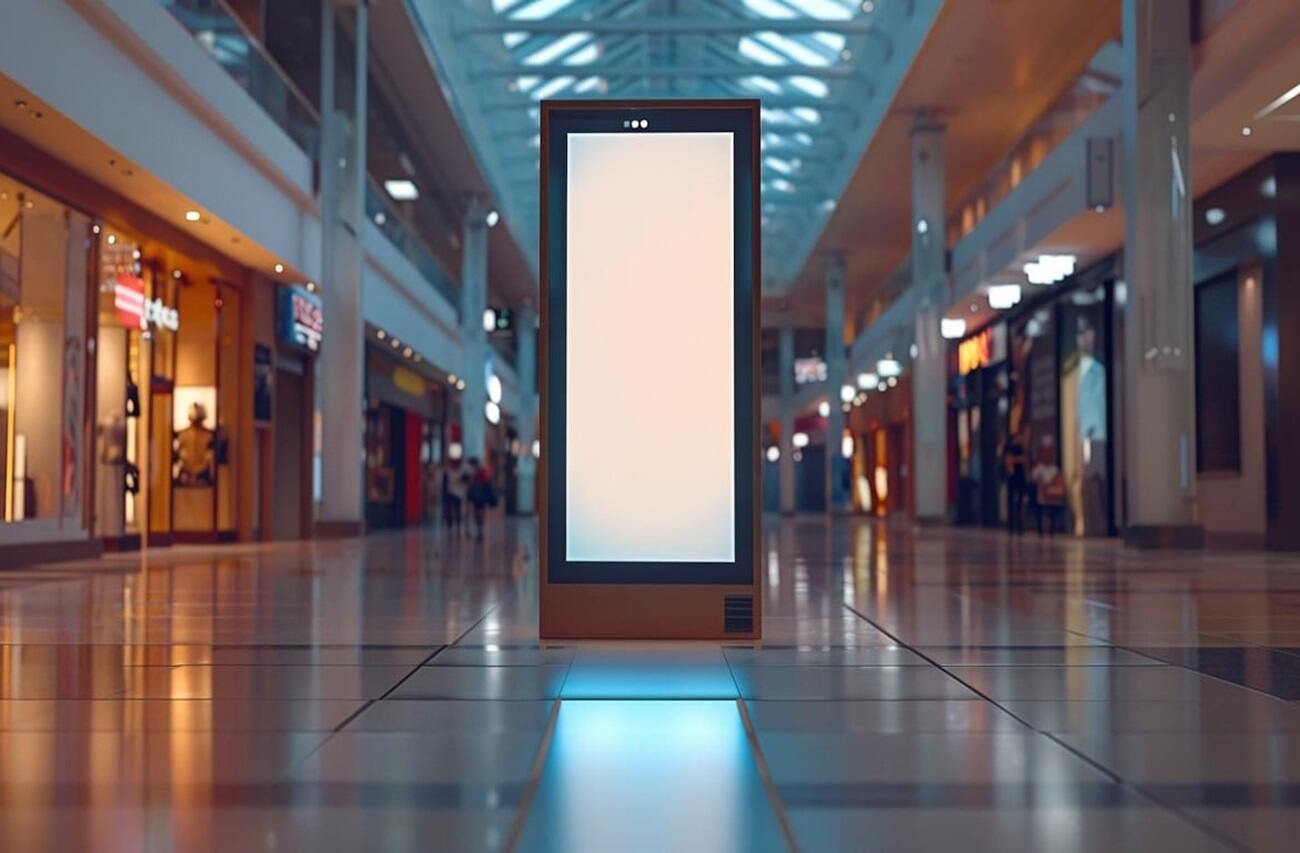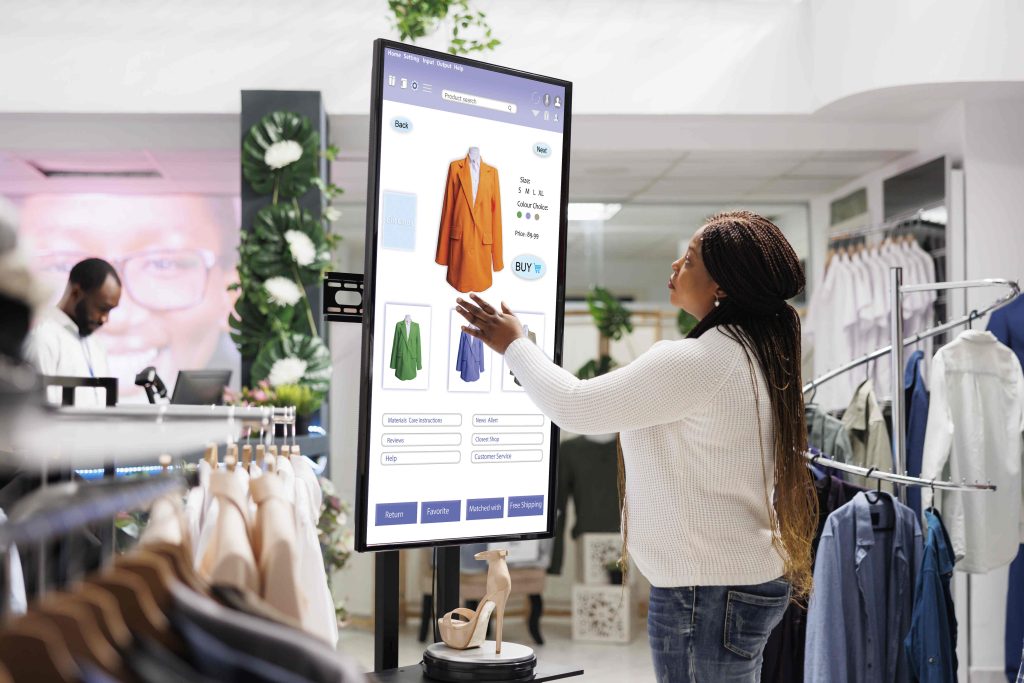
9 new-age & efficient B2C advertising tools
e all know how challenging it is to impress today’s consumer who is well-informed, astute, and fully capable of making informed decisions. Gone are the days when consumers only knew what you told them about your brand. Previously, B2C businesses didn't have to focus so heavily on marketing and advertising tools. This doesn't mean marketing and advertising are less important in running a business—not at all. Marketing has always been a crucial pillar for keeping a business afloat, standing equally with other facets of business operations. However, today’s consumers demand that you elevate your game in convincing them to buy your products or services. They want you to prove why you’re the better choice. How do you achieve that? We’re here to tell you, it’s not that difficult!
The world of marketing is continuously evolving, with new techniques and pathways emerging regularly. According to Visual Capitalist, the global spend on digital display ads skyrocketed from $27 billion in 2010 to $177 billion in 2022! These new and innovative advertising tools help bridge the gap between businesses and their target audiences more effectively. For instance, in-store digital advertising screens are revolutionizing retail advertising. British retail giant Tesco plans to install 6000 digital advertising screens in its stores by the end of 2025. To support this initiative, Tesco will increase its ad spend by £80 billion by 2025.
As a B2C company serving customers directly, there are certain do’s and don’ts when it comes to marketing your products effectively. Qalara brings you insights into some of these up-and-coming advertising tools that can help scale your B2C business.
Understanding the need for new advertising tools
The shift in consumer behavior
Thanks to continuous technological advancements, consumer habits are evolving rapidly. The ways to reach consumers have undergone a massive transition over the last few decades. While television and print media were once the dominant channels, today, digital advertising reigns supreme. Social media and other digital platforms are now the most effective ways to reach the masses. With shifting consumer behavior, marketing strategies must also evolve. According to data by webstrategiesinc.com, the B2C product sector allocates 15.1% of its revenue towards marketing.
Challenges with traditional advertising
Marketers need to recognize that social media is now essential. With the explosive growth in smartphone usage, traditional advertising methods are in sharp decline. Consumers today are less receptive to outdated tactics of push marketing like print ads, telemarketing, radio shows, cold calls, and cold email pitches. In fact, the ad spend on print and magazine ads has plummeted to levels not seen since the mid-80s! Clearly, social media is reshaping the advertising landscape.
Marketers must embrace this change and focus on digital platforms to connect with their audience effectively. By leveraging the power of social media and adapting to modern consumer behavior, B2C companies can stay relevant and competitive in today’s fast-paced market.
Benefits of modern tools
There are multiple benefits of digital advertising tools. Here are some ways that prove that modern tools for marketing and advertising yield better results.
1. Increased reach: Establishing your brand digitally creates a direct connection between you and your customers. In today’s smartphone era, digital ads have the power to reach a vast audience, attracting more users who are just a click away from exploring your brand. Did you know, digital ads can increase brand awareness by 80%? The higher your brand awareness, the more effective your advertising tools become.
Pro tip:
Having an online presence is like going the extra mile! When users are redirected to your website or social media through ads, instant credibility is established. According to the Sprout Social Index, 51% of consumers feel that the most memorable brands on social media are those that engage and interact with their customers. Whether or not you're an e-commerce business, a website and social media accounts legitimize your company, increase trust, and strengthen the customer-supplier relationship. Customers appreciate having a direct pathway to reach you, enhancing their confidence in your brand. This online presence not only builds trust but also fosters a stronger connection between you and your audience, making your advertising efforts more successful.
2. Personalization: Just think how annoyed you used to get when repetitive and irrelevant commercials on television interrupted your movie watching experience. Unlike traditional push marketing tactics that cast a wide net, new age advertising tools can target prospects with pinpoint accuracy. This is smart advertising!
Modern advertising techniques can deliver personalized ads that resonate with the target audience, making them feel valued. These ads invite the audience to engage, rather than ambushing them to make the decision. It empowers users by letting them know the purchasing decision is entirely theirs. According to statistics, 76% of customers indicated that personalized messages were crucial in improving their consideration of a brand. Ultimately, incorporating personalization tactics in your digital marketing or advertising strategies ensures your ad spend yields a fitting ROI.
3. Scalability, flexibility, and cost-efficacy: Digital marketing campaigns are much less time-consuming compared to traditional avenues like advertisements and billboards. The latest advertising modes such as PPC, social media ads, and native ads are not only economical but also scalable, depending on your needs and resources. This explains why businesses are increasingly favoring digital marketing solutions. A study projected that in 2023, spending on digital and alternative media advertising has grown by over 10% globally, while investments in traditional marketing decreased by 2%. Easier to execute, convenient to optimize, and adaptable to changing trends, these new advertising methods can respond quickly to industry shifts and varied customer segments. Additionally, digital ads often offer better targeting and higher ROI, making them a more cost-effective choice for reaching your audience. The flexibility and affordability of digital marketing allow businesses to maximize their ad spend and achieve significant results without breaking the bank.
4. Maximum ROI: Imagine running a print ad in a popular magazine for your furniture business. While the reach is moderately targeted, there is often a gap between the projected target numbers and the actual audience reached. This gap shrinks significantly with modern advertising models. For instance, according to smallbizgenius.net, PPC or paid advertising returns $2 for every $1 spent—a 200% ROI. If that’s not maximum ROI, we don’t know what is!
5. Enhanced tracking and ROI analytics: Digital advertising tools offer superior tracking and analytics, enabling you to fine-tune your campaigns for even higher returns. The integration of technology with marketing strategies makes it easier than ever to monitor and review the performance of your ads and marketing efforts. With detailed data at your fingertips, you can optimize your advertising efforts as needed. This allows you to make data-driven decisions that impact future measurable KPIs. B2C marketing metrics like website traffic, conversion rate, customer retention rate, and marketing ROI—metrics not as easily accessible through traditional methods—highlight areas for adjustment and improvement to your advertising decisions. Moreover, digital marketing returns can be tracked in real-time, ensuring your strategies are always on point.
6. Reach global audiences: The recent surge in social media has shown us that the world is no longer constrained by geographical borders. By leveraging online channels, you can create marketing ads that address the pain points of users across various international markets. Tools like influencer marketing, blogging, YouTube, and Facebook ads allow you to tap into a wider demographic that may have been previously unreachable. According to WARC’s study, companies like Alphabet, Meta, Amazon, Alibaba, and ByteDance will account for 51.9% of all ad spend this year, with social media ads experiencing the fastest growth. Digital marketing ads can significantly extend your reach, ensuring nothing is off-limits. Use these new-age marketing strategies effectively, and a global audience awaits you!
9 new-age advertising tools
Here are some key advertising tools and channels that many B2C companies use to scale their business!
Social Media Advertising
Adults in the U.S. spend an average of 7 hours and 3 minutes a day using internet-connected devices. In parallel, research by Microsoft reveals that the average human attention span is just 8 seconds! This means those hours are spent consuming a vast array of content. A significant portion of this time is dedicated to social networking sites, which is where Social Media Marketing (SMM) comes into play. SMM encompasses content marketing, influencer marketing, social media advertising, and more, focusing on promoting your brand on social platforms.
Social media advertising involves allocating ad spend to reach your target audience through promoted content on social networking sites. Popular choices for running social media ad campaigns for B2C companies include Facebook, Instagram, Twitter, TikTok, and YouTube. A survey found that 80% consumers expect businesses to have a strong social media presence to facilitate customer service.
Pro tip:
Conduct thorough research on your target demographic to understand which social media platform they engage with the most. This will help shape the format, nature, and concept of your advertisements. For instance, if your target audience is 18-19 years old, it would be wise to create targeted ads using YouTube Shorts, in-stream ads, or Instagram Reels.
By leveraging the right social media platforms, you can effectively capture the attention of your audience and promote your brand. Remember, the key to successful social media advertising is understanding where your audience spends their time and crafting content that resonates with them.
Ephemeral Advertising
Ephemeral content is the latest trend in Social Media Marketing (SMM). This type of content—images, videos, GIFs, text, and audio—lasts only 24 hours before disappearing from social media. Platforms like Instagram and WhatsApp offer ephemeral advertising, leveraging the concept of FOMO (fear of missing out). Users are intrigued to view the content quickly, knowing it will vanish if they delay. This FOMO marketing technique compels users to consume and engage with your content promptly.
Ephemeral advertising is commonly used for Q&A surveys, AMA (Ask Me Anything) sessions, polls, and live-streaming videos. It allows brands to establish a real-time connection with their audience without significant time or cost constraints. By incorporating ephemeral content into your marketing strategy, you can create a dynamic and interactive experience for your audience, driving higher engagement and fostering a stronger connection with your brand.
Pro tip:
Ephemeral advertising is especially effective for connecting with Gen-Z and Gen Alpha audiences, who are tech-savvy and more likely to engage with real-time content due to their smartphone habits. This approach not only captures their attention but also fosters a sense of immediacy and exclusivity, enhancing audience engagement and brand loyalty.
Paid Search Advertising
Paid search advertising, a key component of Search Engine Marketing (SEM), involves paying search engines to place your ads on the search engine results page (SERPs). Typically, when users enter a search query on platforms like Google or Bing, the results they see are a combination of organic (non-paid) and paid listings. Organic results are ranked based on their SEO strength, while paid results appear at the top of the page, marked as ‘ads.’
These ads operate on the PPC (pay-per-click) model, meaning you only pay the search engine when users click on your ads. Google Ads, for instance, displays 3 types of ads on its SERP: text ads, local search ads, and shopping ads.
1. Text ads: Text ads appear at the top of the SERP and include the display URL, up to 3 headlines, and up to 2 brief descriptions. They are designed to attract immediate attention and drive clicks to your website.
2. Local search ads: Local search ads are ideal for businesses with physical locations. These ads allow advertisers to show their business name, address, store hours, contact information, ratings & reviews, photos, website information, and location on a clickable map. This feature helps drive more store visits, calls, and inform local customers about your business.
3. Shopping ads: Shopping ads cater to retail-centric campaigns, showcasing your products with images, text, prices, reviews, discounts, and more. Unlike text ads, Shopping Ads do not rely on keywords but use product data from the Merchant Center to feature your ads in relevant searches. These ads often bring in better-qualified leads since users are typically further along in the purchasing funnel and ready to buy. When presented with comprehensive product information, they are more likely to make quick and favorable purchasing decisions.
By leveraging paid search advertising, you can effectively reach your target audience, increase visibility, and drive higher engagement and conversions for your business.
Display Advertising
Display advertising involves paid ads that utilize visual content such as images and videos, appearing on websites, social media platforms, blogs, apps, and more. These ads are typically found on sidebars or within web pages as images and banners. Unlike paid search advertising, which appears during specific search queries, display advertising targets users as they browse the internet. While paid search ads aim for quick sales, display ads focus on building long-term brand awareness.
By visually promoting your brand across various online platforms, these ads significantly enhance brand recognition. They have the potential to drive traffic to your website, landing page, and even lead to registrations or purchases. To get started, consider exploring Google’s display campaigns here.
Here are a few types of display ads:
1. Banner Ads: These graphic display ads consist of static or animated content placed in high-visibility areas on websites with significant traffic.
2. Native Display Ads: These ads blend seamlessly into the surrounding content, making them less obtrusive. Although they do not disrupt the user’s interaction with the webpage, they are labelled as sponsored for transparency. Native ads can take the form of images, text, videos, or GIFs and are designed to merge seamlessly with the website design, so that they do not explicitly look or feel like ads.
3. Interstitial Ads: These full-screen ads take over the entire interface of the host app or website. As the name suggests, they only appear during natural transitions, such as switching websites or during pauses on a video. Users can either click on the ad or close it to return to their previous activity.
4. Pop-up Ads: These are smaller frames that pop up on a landing page, triggered by specific rules and actions. Pop-ups can convert an average of 4.01% of website visitors. Unlike interstitial ads, which appear during moments of less activity, pop-ups capture immediate attention by showing up periodically.
5. Rich Media Display Ads: These advanced, interactive ads include clickable features such as videos and audio. They offer an immersive experience, with ads that can expand, float, and more, encouraging greater user interaction.
Display advertising is a powerful tool for B2C companies to enhance brand recognition and advertise their products these days. By leveraging various types of display ads, you can create a comprehensive advertising strategy that reaches a wider audience and fosters stronger brand connections.
In-Store Advertisements

A supplier told The Grocer magazine, “As well as having Europe’s largest network of screens, Tesco announced it is on a major drive to make the shopping and advertising experience more personalised.” Additionally, Tesco plans to integrate AI into its retail advertising strategies and introduce handheld scanners. These ‘scan and shop’ tools will allow customers to shop while engaging with the ad screens, creating a seamless and interactive shopping experience.
With technology advancing rapidly and AI advertising tools, in-store digital ads can drive sales by capturing shoppers’ attention in real-time and encouraging impulse purchases. The dynamic nature of these ads can significantly enhance the in-store experience. By leveraging these advanced technologies, retailers can not only increase customer engagement but also drive sales and improve overall shopping satisfaction.
Also read: The art of effectively using AI in retail
Podcast Advertising
Podcasts are all the rage these days, and for good reason. In our increasingly busy world, podcasts offer a form of media that can be enjoyed while commuting, running errands, or multitasking. According to Exploding Topics, podcasting has become a multi-billion dollar industry with approximately 504.9 million listeners worldwide!
Podcast advertising involves promoting your brand through audio content. This medium is consistently growing, proving to be versatile and convenient for brand promotion. Businesses can either develop their own podcast or collaborate with established podcasters to advertise their products or services. Many companies favor this channel because it allows them to reach a niche audience and achieve a high ROI. Podcast advertising offers a unique opportunity to engage with potential customers in a more intimate and engaging way.
Influencer and Micro-Influencer Partnerships
A powerful digital version of word-of-mouth, influencer marketing helps businesses build a large network of followers and boost brand affinity. This strategy involves collaborating with popular individuals on social media who promote products and services to their followers, encouraging them to make purchases. Users appreciate recommendations from trusted influencers, making them more likely to convert. In fact, 69% of consumers trust their favorite influencers’ recommendations.
While mega-influencers boast massive followings, micro-influencers, with their smaller but highly engaged audiences, often deliver better results. For maximum ROI, consider partnering with micro-influencers whose content aligns with your niche. These partnerships typically involve paying influencers a flat fee to advertise your product through text, video, or short-video formats. Instagram, YouTube, Twitter, Snapchat, and TikTok are the most popular platforms for these advertisements.
Affiliate Marketing
Affiliate marketing is similar to influencer advertising but with a key difference: while influencers are paid a flat fee for promoting your brand, affiliates earn a commission only when a sale is made. This outcome-based model means affiliates earn based on the campaign’s success. Affiliates use blogs, newsletters, websites, emails, and podcasts to advertise products or services. There are 3 types of affiliate marketing: Unattached, Related, and Involved.
1. Unattached Affiliate Marketing: Here, the affiliate has no experience using the product they promote.
2. Related Affiliate Marketing: In this type, affiliates might not have personal experience with the product but possess expertise and influence in the niche.
3. Involved Affiliate Marketing: This involves affiliates who have personally used the product and can confidently recommend it based on their experience.
This model allows businesses to benefit from the reach and credibility of affiliates while ensuring that payments are tied directly to results, making it a cost-effective and performance-driven advertising strategy. By choosing the right affiliates, B2C companies can effectively reach their target audience and drive sales.
Programmatic Advertising
Programmatic Advertising is a sophisticated form of Display Advertising that uses automated technology and artificial intelligence to buy and sell ad space. This data-driven method employs software and algorithms to identify and reach your precise audience, delivering ads to them automatically. Advertisers acquire ad space through real-time bidding with publishers, facilitated by automated platforms. The process involves 3 main components:
1. Demand Side Platform (DSP): This is a software that enables advertisers to purchase ad space through automation.
2. Supply Side Platform (SSP): Used by publishers to list and sell ad space to advertisers through automation.
3. Ad Exchange: The marketplace where multiple DSPs bid for space offered by an SSP, resulting in the actual ad exchange.
Ad space is bought through Real-time Bidding (RTB), Private Marketplaces (PMP), Preferred Deals, and Programmatic Guaranteed. The formats for programmatic ads include display, video, native, social, audio, television ads, in-app ads, and digital out-of-home (DOOH) ads. To get started with Programmatic Advertising, platforms like Google AdWords, Bing Ads, Facebook Ads, and Amazon Advertising are excellent options. This approach not only optimizes ad placement but also ensures that your advertising efforts are efficient and targeted, maximizing your reach and impact.
Conclusion
Understanding today’s consumer is crucial. They are looking for reasons to choose your brand over others, and effective marketing can provide those reasons. The constant evolution in marketing tools offers numerous opportunities to engage with your audience more deeply and persuasively. Embracing these advancements can give your business a competitive edge, ensuring that your marketing strategies resonate with the well-informed, discerning customers of today. Which of these advertising strategies do you think will work best for your brand? Share your thoughts and insights in the comments below—we’d love to learn more about your niche and how you approach advertising!
~ Written by Gauri S






Leave a Reply